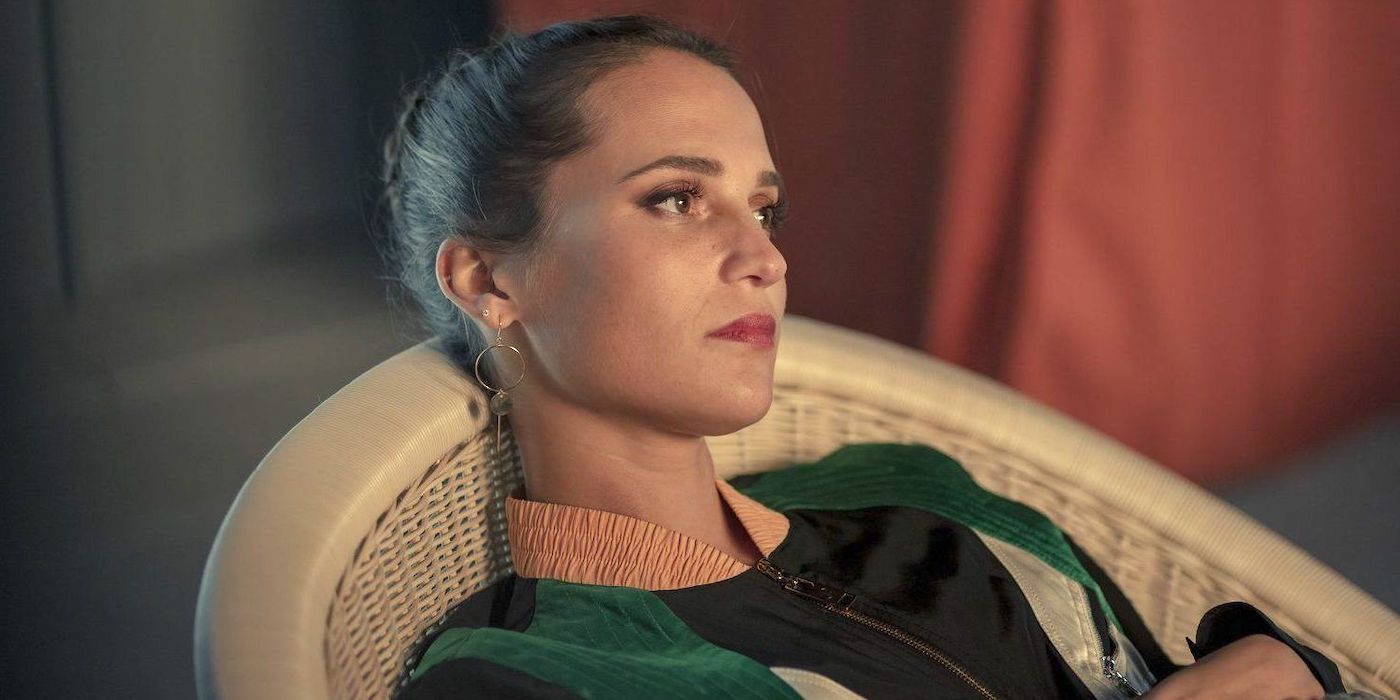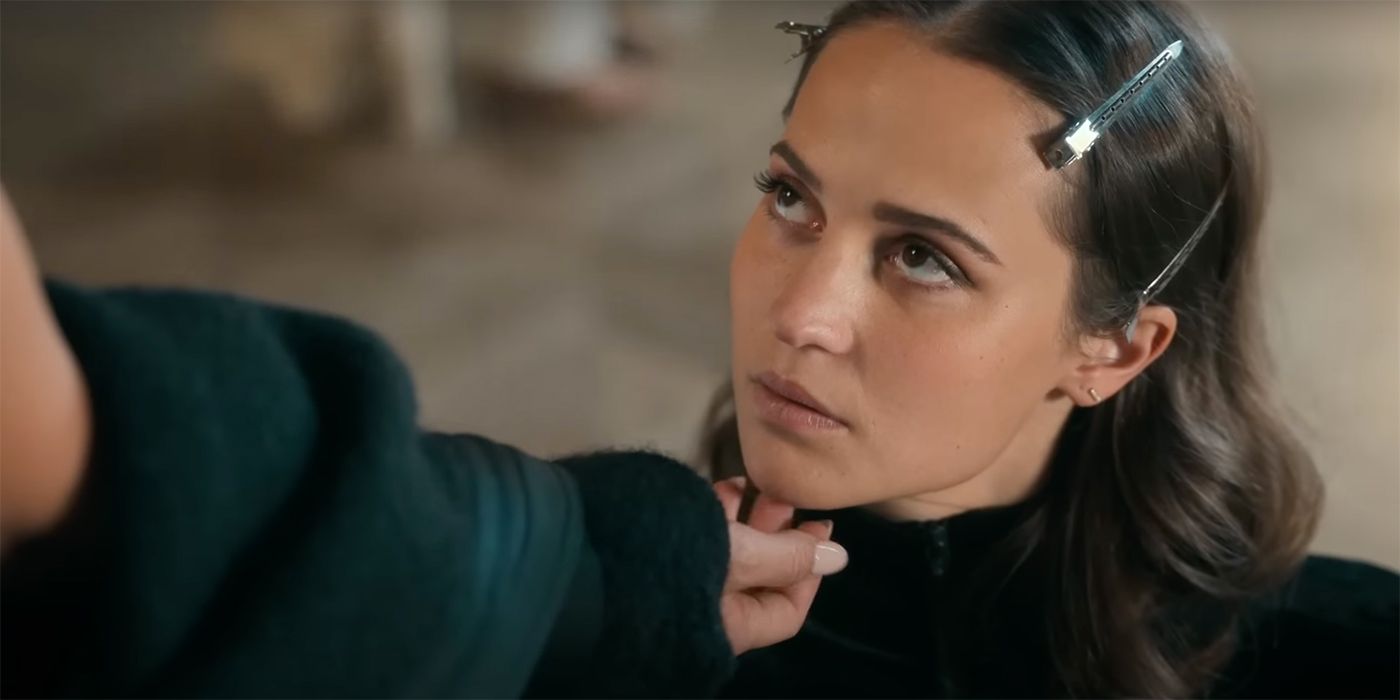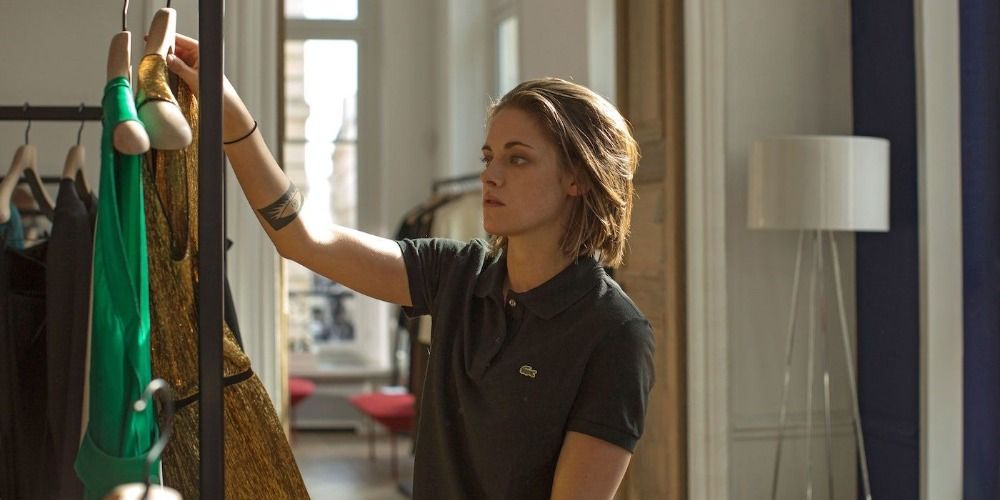The work of the inventive French filmmaker Olivier Assayas can be described as many things. His approach feels both patient and poetic, infused with a humorous sensibility that can quickly shift into being more somber. He has been associated with a movement that is known as the New French Extremity for what is perceived as his more transgressive stylings though is also not simply confined to the classification. In particular, something that feels woven through his best creations is a desire to craft a reflective self-examination that takes on a more meta quality. It has been felt in his earliest work such as Cold Water, where he drew from his own personal experience, to the intriguing and illuminating new HBO miniseries Irma Vep that recently premiered at this year’s Cannes Film Festival before its upcoming June release.
It stars Alicia Vikander as Mira, an American movie star who is looking to redefine her career by taking on a more serious role. She is part of a vision that fictional director Rene Vidal (Vincent Macaigne) has to revisit his own film that he is now remaking into a series. The actual series we see is also a remake of a film that Assayas released in 1996, starring the legendary Maggie Cheung playing a version of herself, which itself was about the process of making a movie. This mirrors the journey of the fictional director of the series who shares the name of the character Assayas had making the fictional film. This only gets more multilayered as the series goes on. It is Assayas taking us deeper into self-reflection than he ever has before, bringing both a sense of mirth and melancholy into everything.
Based on the first four episodes of the series, this work sees Assayas dipping into this well of meta storytelling with glee as he seems to be both pillorying himself and the process of production. It felt rather similar to what his fellow French filmmaker Gaspar Noé did in his recent Lux Æterna. Still, it is important to note this most recent work sees Assayas focusing more on characters with all their insecurities and flaws laid bare in a manner that is all too familiar. It dials everything up to a higher level of reflection as it becomes his most multilayered foray into the meta. The way his stories have played out has always made it clear that he has an interest in looking both back on themselves and inward on himself. The more we learn about the people that populate them, the more we can see this interest emerge.
Of course, this was felt in the original 1996 Irma Vep that expressed a clear reverence to aspects of both French and Hong Kong cinema. At the same time, it feels like a deconstruction of the fractured process of making a film with characters frequently getting at each other’s throats in the production. In 2012’s Something in the Air, the director reflected on his own experience of growing up in the early '70s when France was going through political turmoil. It also was clear that you could see much of Assayas in the character of Gilles (Clément Métayer) who is trying to determine his own place in the world as an artist.
Then there was 2014’s sublime Clouds of Sils Maria which starred both Juliette Binoche and Kristen Stewart in roles that became increasingly pointed observations on their respective personas. It was all built around Binoche as a veteran actor who seeks to revisit a role that made her famous and Stewart as her assistant who helps her practice her lines. The more they rehearse and discuss, the more the scenes become almost indistinguishable from what the two themselves are going through. It was all handled with a light touch that still left an indelible mark on the audience with how it looked outward as well as inward.
Following that, there was the intriguing and illusive Personal Shopper that again starred Stewart as an assistant dealing with spiritual as well as technological disruption. As the two begin to meld together into a personal crisis, it feels like it is both a treatise on loss and the way the star herself was made the target of our collective scrutiny. Each raises underlying questions about how much the characters are reflections of the actors Assayas cast for the parts, feeling both subtle and almost surreal in how they approach this. It isn’t always made blunt, though it is undeniable that there is something going on subtextually.
This now brings us back to the new Irma Vep series, something that may seem more on the nose than any of his previous work. Indeed, the way the series shows how its fictional director is almost a direct copy of Assayas is arguably him making his most explicit metatextual interjection. However, it packs his same ear and eye for creating more intense emotional observations that transcend beyond merely winking at the audience.
Don’t let it be mistaken, much of this is humorous like when we hear the fictional director describe how he is approaching the series as just being a long movie even as he tries to distinguish it from the work he already did. The description mimics the narrative structure of the story Assayas himself is telling. It invites us to chuckle at the tension embedded within this undertaking while we also look at how much he is able to actually pull it off. It pokes fun at the arrogance of the artists at work, using the show as a basis for amusing metareflection.
All of these aspects in his body of work could be superficially read as being about jokes and comedy, though the meta becomes a way Assayas grapples with a greater sense of looming tragedy. All of the ways he creates abstractions between fiction and reality contain plenty of merriment though it soon becomes almost mournful. In tying everything so closely to authentic emotions and observations, Assayas makes everything feel that much more impactful. Characters and stories become a mirror back onto our own world, calling into question everything we are seeing with a more incisive edge. All question the value of making art and personal expression when we see its magic stripped away. There are no auteurs in the productions within productions and the stories within stories for Assayas.
Quite the opposite, there are only fragile and uncertain people trying to make the most of their work despite a multitude of challenges. His most recent crack at Irma Vep captures this most clearly, an extension of the stories he has been both creating and commenting on with each new project. It is in the meta nature of his work that he challenges himself as well as the form, molding fiction and reality into something as beautiful as it is reflective.




